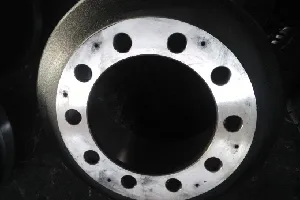
-
 Afrikaans
Afrikaans -
 Albanian
Albanian -
 Amharic
Amharic -
 Arabic
Arabic -
 Armenian
Armenian -
 Azerbaijani
Azerbaijani -
 Basque
Basque -
 Belarusian
Belarusian -
 Bengali
Bengali -
 Bosnian
Bosnian -
 Bulgarian
Bulgarian -
 Catalan
Catalan -
 Cebuano
Cebuano -
 Corsican
Corsican -
 Croatian
Croatian -
 Czech
Czech -
 Danish
Danish -
 Dutch
Dutch -
 Enska
Enska -
 Esperanto
Esperanto -
 Estonian
Estonian -
 Finnish
Finnish -
 French
French -
 Frisian
Frisian -
 Galician
Galician -
 Georgian
Georgian -
 German
German -
 Greek
Greek -
 Gujarati
Gujarati -
 Haitian Creole
Haitian Creole -
 hausa
hausa -
 hawaiian
hawaiian -
 Hebrew
Hebrew -
 Hindi
Hindi -
 Miao
Miao -
 Hungarian
Hungarian -
 Icelandic
Icelandic -
 igbo
igbo -
 Indonesian
Indonesian -
 irish
irish -
 Italian
Italian -
 Japanese
Japanese -
 Javanese
Javanese -
 Kannada
Kannada -
 kazakh
kazakh -
 Khmer
Khmer -
 Rwandese
Rwandese -
 Korean
Korean -
 Kurdish
Kurdish -
 Kyrgyz
Kyrgyz -
 Lao
Lao -
 Latin
Latin -
 Latvian
Latvian -
 Lithuanian
Lithuanian -
 Luxembourgish
Luxembourgish -
 Macedonian
Macedonian -
 Malgashi
Malgashi -
 Malay
Malay -
 Malayalam
Malayalam -
 Maltese
Maltese -
 Maori
Maori -
 Marathi
Marathi -
 Mongolian
Mongolian -
 Myanmar
Myanmar -
 Nepali
Nepali -
 Norwegian
Norwegian -
 Norwegian
Norwegian -
 Occitan
Occitan -
 Pashto
Pashto -
 Persian
Persian -
 Polish
Polish -
 Portuguese
Portuguese -
 Punjabi
Punjabi -
 Romanian
Romanian -
 Russian
Russian -
 Samoan
Samoan -
 Scottish Gaelic
Scottish Gaelic -
 Serbian
Serbian -
 Sesotho
Sesotho -
 Shona
Shona -
 Sindhi
Sindhi -
 Sinhala
Sinhala -
 Slovak
Slovak -
 Slovenian
Slovenian -
 Somali
Somali -
 Spanish
Spanish -
 Sundanese
Sundanese -
 Swahili
Swahili -
 Swedish
Swedish -
 Tagalog
Tagalog -
 Tajik
Tajik -
 Tamil
Tamil -
 Tatar
Tatar -
 Telugu
Telugu -
 Thai
Thai -
 Turkish
Turkish -
 Turkmen
Turkmen -
 Ukrainian
Ukrainian -
 Urdu
Urdu -
 Uighur
Uighur -
 Uzbek
Uzbek -
 Vietnamese
Vietnamese -
 Welsh
Welsh -
 Bantu
Bantu -
 Yiddish
Yiddish -
 Yoruba
Yoruba -
 Zulu
Zulu
disc brake vs drum
Disc Brake vs. Drum Brake A Comprehensive Comparison
When it comes to the braking systems in vehicles, there are two primary types that dominate the market disc brakes and drum brakes. Both have their pros and cons, and understanding the differences between them can be essential for making informed decisions regarding vehicle maintenance or upgrades. This article will explore the functionalities, advantages, and disadvantages of each system, providing a comprehensive overview of disc brakes versus drum brakes.
Functionality
Disc brakes operate using a rotor and a caliper. When the brake pedal is engaged, brake pads are pressed against a spinning disc (the rotor), creating friction that slows down or stops the vehicle. Disc brakes are typically mounted on the front wheels, but they can also be found on the rear.
On the other hand, drum brakes feature a cylindrical drum that houses brake shoes. When the brake pedal is pressed, the brake shoes expand outward against the inside of the drum. This creates friction, slowing the wheel. Drum brakes are more commonly used on the rear wheels of some vehicles, although they can also be utilized in the front.
Advantages of Disc Brakes
1. Performance Under Heat Disc brakes are known for their ability to dissipate heat effectively. This makes them less prone to brake fade, a condition where braking efficiency diminishes due to overheating. This is particularly advantageous in high-performance situations, such as racing or downhill driving.
2. Better Stopping Power Disc brakes generally provide superior stopping power, especially in emergency situations. The increased surface area of the brake pads allows for a more efficient braking force.
3. Maintenance and Inspection Disc brakes are easier to inspect and maintain. The exposed nature of the brake components allows for quick visual checks, which can help in early detection of wear or issues.
4. Performance in Wet Conditions Disc brakes tend to perform better in wet conditions since water is less likely to get trapped between moving parts. This enhances reliability and responsiveness in adverse weather.
disc brake vs drum

Advantages of Drum Brakes
1. Cost-Effectiveness Drum brakes are usually cheaper to manufacture and purchase, making them a cost-effective solution for many vehicles, especially smaller or less performance-oriented cars.
2. Auto-Adjustment Features Many drum brake systems come with self-adjusting mechanisms, which can simplify maintenance and ensure proper functioning over time without manual adjustments.
3. Space Efficiency Drum brakes can be more compact and lighter than disc brakes, making them suitable for smaller vehicles or certain design constraints.
Disadvantages of Each System
Disc Brakes - Cost While they offer better performance, disc brakes are typically more expensive to manufacture and repair. - Weight Disc brake systems can add weight to a vehicle, which might affect fuel efficiency in smaller cars.
Drum Brakes - Heat Dissipation Drum brakes trap heat more easily, which can lead to brake fade under heavy use. - Complexity in Maintenance While they can be self-adjusting, drum brakes often require more complex disassembly for complete maintenance, potentially making repairs more time-consuming.
Conclusion
In conclusion, the choice between disc brakes and drum brakes ultimately depends on a vehicle’s specific use case, design, and performance requirements. Disc brakes are the preferable option for those seeking improved stopping power and performance, particularly in high-demand environments. Conversely, drum brakes could be suitable for budget-conscious consumers or simpler vehicle setups where weight and cost considerations are paramount. Understanding both systems allows vehicle owners and enthusiasts to make informed decisions that enhance both safety and performance on the road. Whether you prioritize performance or cost-effectiveness, knowing the strengths and weaknesses of each option can help you maintain a reliable braking system tailored to your needs.
-
Rear Drum Brakes Maintenance TipsFréttirAug.04,2025
-
Key Components Affecting Brake Drum FunctionFréttirAug.04,2025
-
Important Inspection for Truck Drum BrakeFréttirAug.04,2025
-
How to Prepare for Changing Rear Drum BrakesFréttirAug.04,2025
-
Essential Tools for Cleaning Drum Brakes ProperlyFréttirAug.04,2025
-
Brake Drum Function GuideFréttirAug.04,2025
-
Safety Features of Red Brake DrumsFréttirAug.01,2025
